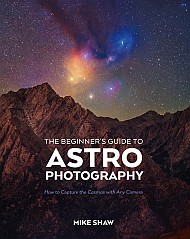Astronomy
Flower-like origami patterns could inspire folding spacecraft
The Milky Way's faintest satellite may not be what astronomers thought. 'These results solve a major mystery in astrophysics'
It's Official: Asteroids Ryugu and Bennu Are Siblings
Some scientists thought that the asteroids Ryugu and Bennu were from the same family. Now that they have samples and JWST spectra from both, the verdict is in: They're both from the Polana collisional family, a diverse and widespread family of asteroids.
A Distant Star Explodes While Swallowing Its Black Hole Companion
Astronomers have discovered what may be a massive star exploding while trying to swallow a black hole companion, offering an explanation for one of the strangest stellar explosions ever seen.
Moon Flybys Could Save Fuel On Interplanetary Missions
The Three Body Problem isn’t just the name of a viral Netflix series or a Hugo Award winning sci-fi book. It also represents a really problem in astrodynamics - and one that can cause headaches to mission planners in terms of its complexity, but also one that offers the promise of an easier way to enter stable orbits that might otherwise be possible. A new paper from researchers at the Beijing Institute of Technology shows one way those orbital maneuvers might be enhanced while exploring planetary systems - by using a gravity assist from its moons.
A 3D Printed Alumnium Mirror Could Enable Enhance CubeSat Observations
Compact, reflective, easy to manufacture mirrors are a critical component for advancing astronomical technology in space. Mirrors are a key component in most telescopes, though they are notoriously hard to manufacture with the necessary precision, especially at large scales. A new paper from researchers in the UK uses additive manufacturing to make a thin, flexible, and lightweight mirror out of aluminum and analyzes its properties to see if it will be useful in applications such as CubeSats.
Tracking the Interstellar Objects 1I/'Oumuamua, 2I/Borisov, and 3I/Atlas to their Source
In a recent paper, researchers followed the trajectories of 1I/`Oumuamua, 2I/Borisov, and 3I/ATLAS - three installer objects that have entered the Solar System in the past decade - to constrain their possible origin. Through a series of Monte Carlo simulations, they came up with predictions of where they came from and how old they are.
Detecting Exoplanet Magnetic Fields From The Moon
Exoplanets with and without a magnetic field are predicted to form, behave, and evolve very differently. In order to understand the exoplanet population, and to make progress understanding habitability, astronomers need to understand and constrain exoplanets' magnetic fields. Detecting them may best be done from the Moon.
Astronomers Search for Dark Matter Using Far Away Galaxies
Physicists from the University of Copenhagen have begun using the gigantic magnetic fields of galaxy clusters to observe distant black holes in their search for an elusive particle that has stumped scientists for decades.
How Did Jupiter's Galilean Moons Form?
We already know a decent amount about how planets form, but moon formation is another process entirely, and one we’re not as familiar with. Scientists think they understand how the most important Moon in our solar system (our own) formed, but its violent birth is not the norm, and can’t explain larger moon systems like the Galilean moons around Jupiter. A new book chapter (which was also released as a pre-print paper) from Yuhito Shibaike and Yann Alibert from the University of Bern discusses the differing ideas surrounding the formation of large moon systems, especially the Galileans, and how we might someday be able to differentiate them.
A Cosmic Noon Puzzle: Why Did Cosmic Noon Galaxies Emit So Many Cosmic Rays?
The Universe's early galaxies were engulfed in halos of high-energy cosmic rays. It's likely because they had tangled and turbulent magnetic fields. These fields accelerate cosmic rays to higher energies.
China’s Crewed Lunar Lander Passes Key Test Milestone
China took a step closer to the Moon, with the first short test for their crewed lunar lander. The test was completed on Wednesday, August 6th at a facility in China’s northern Hebei Province, and lasted just under 30 seconds. The tethered test successfully demonstrated the integration and performance of key systems, simulating descent, guidance, control and engine shutdown. This marks the first test for a China’s Manned (crewed) Space Agency (CMSA’s) human-rated lander.
JPL Is Ready To Test Mars Samples - If They're Ever Returned
Taking a walk is great for inspiration. There have been numerous studies about how people think more clearly on walks, and how new ideas come to them more frequently while doing so. That’s part of the reason some of the most famous minds in history included a daily walk in their schedule. Just such an inspiration must have happened recently to Nicholas Heinz, a scientist at NASA’s Jet Propulsion Laboratory (JPL) in California. On a hike in Arizona he found a rock that could be used as an analog of a unique one found by the Perseverance rover on Mars - and decided to take it back to his lab to study it.x


